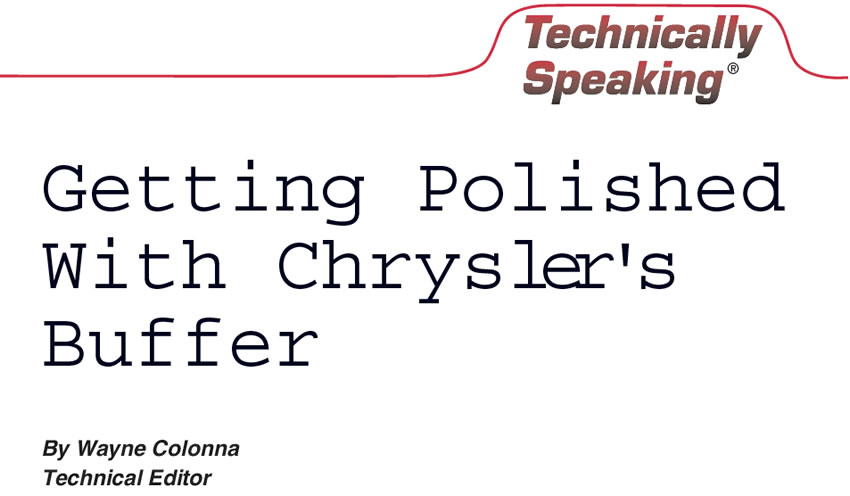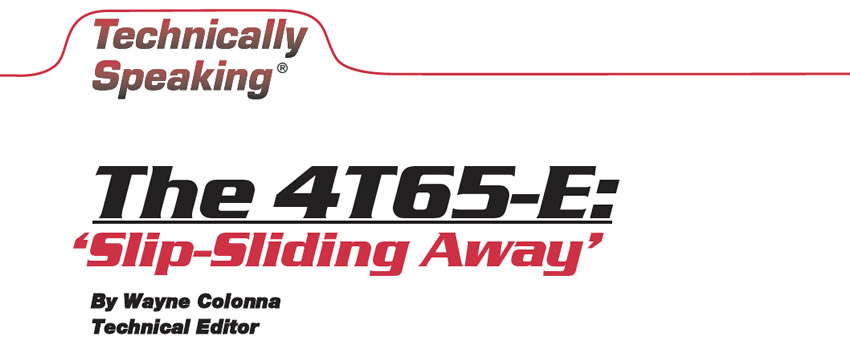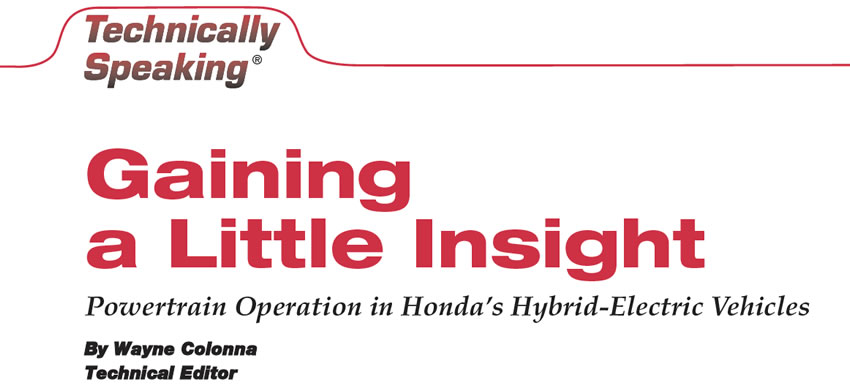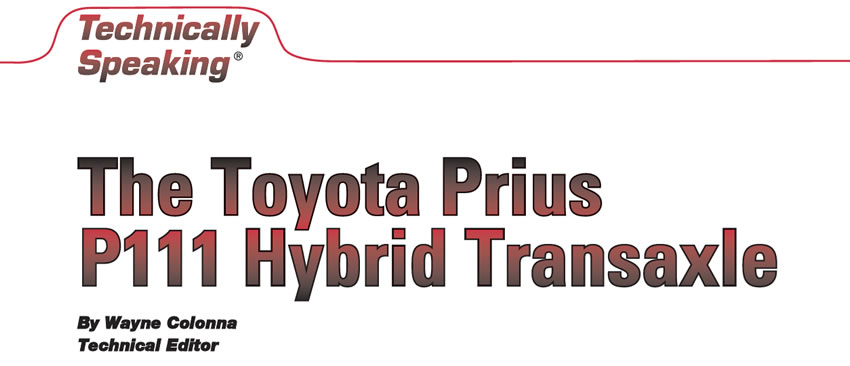No Vehicle-Speed Sensor?
A 1995 Lincoln Continental with an AX4N transmission comes into the shop with a gear-ratio-error code. As you are going through the diagnostic routine, you have pretty much determined that the unit needs to come out. But before you remove it, you decide to check for a glitch in the vehicle-speed sensor (VSS).

Getting Polished With Chrysler’s Buffer
The speed buffer in a GM vehicle (see Figure 1) is a familiar piece of hardware for most transmission technicians. And its operation of taking an AC voltage signal from a speed sensor and converting it to a DC pulse signal for the computer is just as familiar. But what does come as a surprise to many is that Chrysler uses a similar speed-signal strategy for many of its passenger cars and vans.

Hot Tech From the Hotline
Have you ever encountered spin-out of the front pump bushing on a Mitsubishi KM unit as shown in Figure 1? Several years ago Paul Yaklin produced a bulletin explaining how the converter pilot bushing would get stuck on the pilot of the converter (see Figure 2). When the converter is removed, the pilot bushing stays with the converter unnoticed. Inevitably, a rebuilt converter then is installed without the adapter bushing in the crank bore. As a result, the centerline of the converter becomes seriously misaligned.

The 4T65-E: ‘Slip-Sliding Away’
Three to six months after you overhaul a 4T65-E transaxle, the vehicle may come back with a code, either P0730 (incorrect/undefined gear ratio) or P1811 (maximum adapt and long shift).
Generally, code P0730 occurs immediately after installation of a transaxle with an incorrect ratio. This could mean that either an exchange unit with an incorrect ratio was installed or incorrect sprockets and/or final drive was used during rebuild in the shop.

Stepless Ratios in CVTs
Continuously variable transaxles use pulleys and a drive belt as the components needed to provide the vehicle with stepless gear ratios. The basic construction of a pulley is movable and stationary surfaces (see Figure 1). The drive belt Honda uses, constructed of about 280 elements held together by two 12-layer steel loops, is manufactured by Van Doorne Transmissie (VDT) of the Netherlands, with Honda giving it a little tweaking of its own (see Figure 2).

Gaining a Little Insight
A parallel hybrid vehicle allows the power from a gasoline engine and an electric motor to drive the vehicle independently or in conjunction with one another. The Toyota Prius has such a design as well as the Honda Insight and the Civic Hybrid. Although they are all parallel hybrids, there are differing operational strategies between Toyota and Honda.

The Toyota Prius P111 Hybrid Transaxle
The Toyota Prius P111 hybrid transaxle shown in Figure 1 is a continuously variable transaxle. If you are already familiar with a Subaru Legacy or a Honda Civic HX, you might think this is another CVT with a belt and pulleys. Not this unit…

A Bouquet of Hybrids
Honda hit the road first with its gas-engine/electric-motor combo called the Insight, but it was Toyota that pioneered the “Hi Voltage Battery” technology and used it in its Prius vehicle. Ford broke ground by producing the first hybrid SUV with its 2003 Ford Escape. Ford also has plans in the works in which it will use the latest hybrid-electric-vehicle technologies with an advanced new fuel cell to produce the zero-emissions Ford Focus. Prototypes begin in 2004. Other manufacturers soon will have vehicles of environmentally friendly design available for purchase here as well. So it’s another technology that the auto-repair and rebuilding industry needs to prepare for.

The Upshift-Delay Dilemma
Several 1989-1995 Mercedes vehicles using the 722.3 or 722.4 transmission employ a device called the “upshift-delay vacuum actuator.” For this article, I will refer to it as the UDVA.

Even Failsafe Is Subject to Change
Since then, technology has leaped forward at a vicious pace, not breaking for breath. And with this technological race among the “Big 3” manufacturers (U.S., Japan and Europe) comes the need for various computer strategies. Failsafe is one of those strategies that has experienced a change.

Is Your 4WD Explorer Neutralizing?
But inside the transfer case closest to the transmission is the transfer direct-clutch drum that the sealing rings just love to dig into. The severity of the wear determines the degree of the complaint; i.e., delayed engagements, slipping or no movement. Technicians often misdiagnose this problem by blaming the transmission for the problem when all along it has been in the transfer case.


